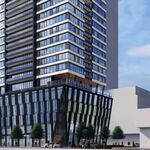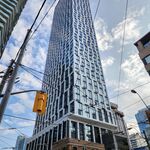Re: Transit
As for the already low density areas, the provinical government (or the new GTA transportation authority) should send out the word that if you want more transit, get your house in order by increasing your densities by RE-designing your current low density areas.
I hope I'm reading your proposal correctly... if current low-density suburbs are going to get more transit, then they need to add more density?
If that is a yes, then I'm very skeptical about this plan. Increasing the density in suburban areas increases population and thus ridership, but the area that needs to be served by transit remains the same as before. The TTC is already stretched to its limits serving suburban areas at current density with the buses that it has. Increasing demand in the suburbs would blow this problem wide open. It's a nice idea, but I don't think it could work with the current situation.
My bus route is an example of what I'm talking about: 129 McCowan North in north Scarborough. When I first came to the area in the early 1990s, most of the neighbourhoods on McCowan Road were single family homes occupied by single families. Since then much has changed. Those who could afford to move out of the area moved to bigger homes in Richmond Hill and Markham, and their old homes were converted into boarding houses for new immigrants from mainland China, most of whom can't afford a car and rely on the TTC to get around. So now you have multiple families living in single family homes. Add to that four new condo towers at Finch and McCowan, plus many other Asian immigrant families that have moved to the McCowan area and also need transit. The density around my bus route has certainly gone up, but the service doesn't seem to have increased with the increase in density in this area.
McCowan probably isn't the only route in the city with this problem. This is happening all over Toronto's inner suburbs. It's a monumental task for the TTC just to improve service to the suburbs today. God knows what will happen if this same TTC has to serve these same suburbs with higher densities.
The idea of combining transit with planning has worked. In places like Singapore and Hong Kong, planning focuses on telling developers
where to build. Development in suburban areas are only allowed in "new towns" where high-density residential towers are built around a subway station, while development is banned from the rest of the suburbs. Unfortunately this is not the way planning works in North America, which is sprawl-oriented, and planning only tells developers
where not to build (such as the Greenbelt). With so much development-friendly land available around the GTA, it's next to impossible given the current context to apply Hong Kong-style planning to the Toronto area.




